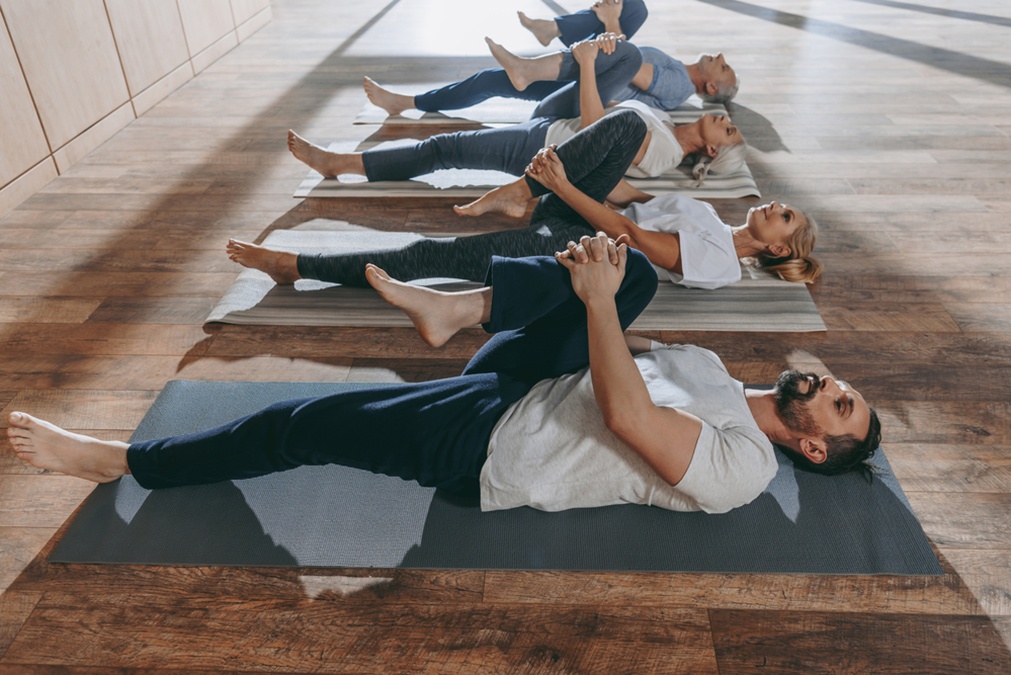 According to a new study published in IOS Press, there is one thing that defines the treatment of arthritis. Without it, all drugs in the world wouldn’t help.
According to a new study published in IOS Press, there is one thing that defines the treatment of arthritis. Without it, all drugs in the world wouldn’t help.
Interestingly, through testing an old, natural healing method, the subject not only improved this factor but they also drastically improved all markers of arthritis.
Sufferers of arthritis are more prone to depression than the general public. And without addressing the depression of the sufferers, their arthritis won’t improve no matter what.
Now, while you might not experience clinical depression, this article will also apply to you if you endure arthritis.
Given these findings, these scientists decided to test the effects of yoga on both depression and arthritis by comparing a group who had received yoga with one that did not.
They placed half of their 72 subjects on an intensive eight-week yoga program.
Both before the yoga program and after its completion, the researchers collected blood samples from all 72 subjects to test for inflammatory markers.
They also used a scientific measure called a Disease activity score 28 erythrocyte sedimentation rate (DAS28ESR) to assess the disease activity at the beginning and the end of the eight weeks, along with a health assessment questionnaire disability index at those same times to check how functional the subjects were.
They gave their subjects something called the Beck Depression Inventory II scale every two weeks throughout the study to monitor their depression levels.
What they discovered was remarkable:
1. Unlike the non-yoga group, the yoga group’s depression levels improved throughout the study at every stage that it was tested.
2. The yoga group had substantially lower inflammatory chemicals in their blood than the non-yoga group.
3. The yoga group’s arthritis was a lot less active when compared to that of the non-yoga group was.
4. The yoga group was more functional and less disabled when compared to the non-yoga group was.
5. Those whose depression lifted the most also experienced the greatest arthritis relief.
As that wasn’t enough:
The cells of yoga participants were healthier and aged slower. Their immune systems were better regulated to fight off infections without needlessly attacking the harmless joint tissue. Their nerve cells showed an increased ability to adjust and form neural connections to compensate for the disease (an ability scientist call Neuroplasticity).
It must be noted that the yoga regiment was intense, lasting 120 minutes for five days a week, a schedule that most people would be likely to complain about. But the benefits are worth it.

 Overcoming IBD
Overcoming IBD Multiple Sclerosis
Multiple Sclerosis Banishing Bronchitis
Banishing Bronchitis Gum Disease Gone
Gum Disease Gone Overcoming Onychomycosis
Overcoming Onychomycosis Neuropathy No More
Neuropathy No More The Prostate Protocol
The Prostate Protocol Brain Booster
Brain Booster
 Ironbound
Ironbound
 Solution for Shingles
Solution for Shingles
 The Bone Density Solution
The Bone Density Solution
 The Ultimate Healing Protocol
The Ultimate Healing Protocol
 The Parkinson's Protocol
The Parkinson's Protocol
 The Chronic Kidney Disease Solution
The Chronic Kidney Disease Solution
 Overthrowing Anxiety
Overthrowing Anxiety The Fatty Liver Solution
The Fatty Liver Solution The Hypothyroidism Solution
The Hypothyroidism Solution
 The End of Gout
The End of Gout The Blood Pressure Program
The Blood Pressure Program
 The Oxigized Cholesterol Strategy
The Oxigized Cholesterol Strategy
 Stop Snoring And Sleep Apnea Program
Stop Snoring And Sleep Apnea Program
 The Arthritis Strategy
The Arthritis Strategy The Vertigo & Dizziness Program
The Vertigo & Dizziness Program The 3-Step Diabetes Strategy
The 3-Step Diabetes Strategy Hemorrhoids Healing Protocol
Hemorrhoids Healing Protocol The Erectile Dysfunction Master
The Erectile Dysfunction Master Weight Loss Breeze
Weight Loss Breeze The IBS Program
The IBS Program The Insomnia Program
The Insomnia Program The Migraine and Headache Program
The Migraine and Headache Program The Neck Pain Solution
The Neck Pain Solution The Menopause Solution
The Menopause Solution The Ejaculation Master
The Ejaculation Master The TMJ Solution
The TMJ Solution The Acid Reflux Solution
The Acid Reflux Solution The Fibromyalgia Solution
The Fibromyalgia Solution The Psoriasis Strategy
The Psoriasis Strategy